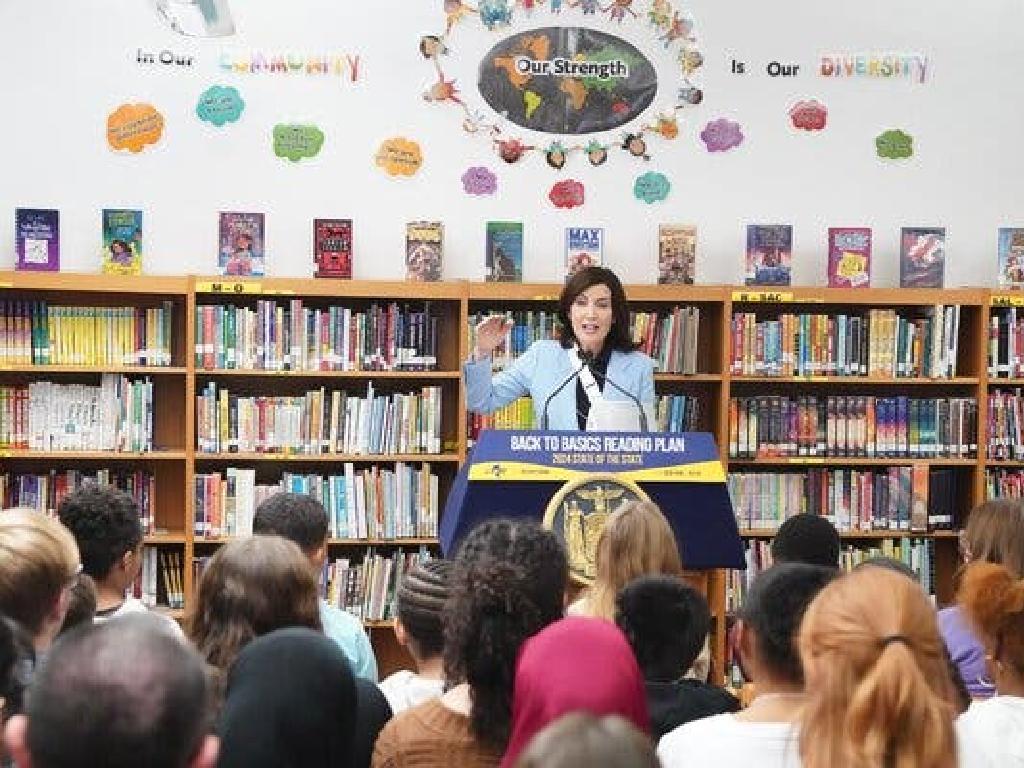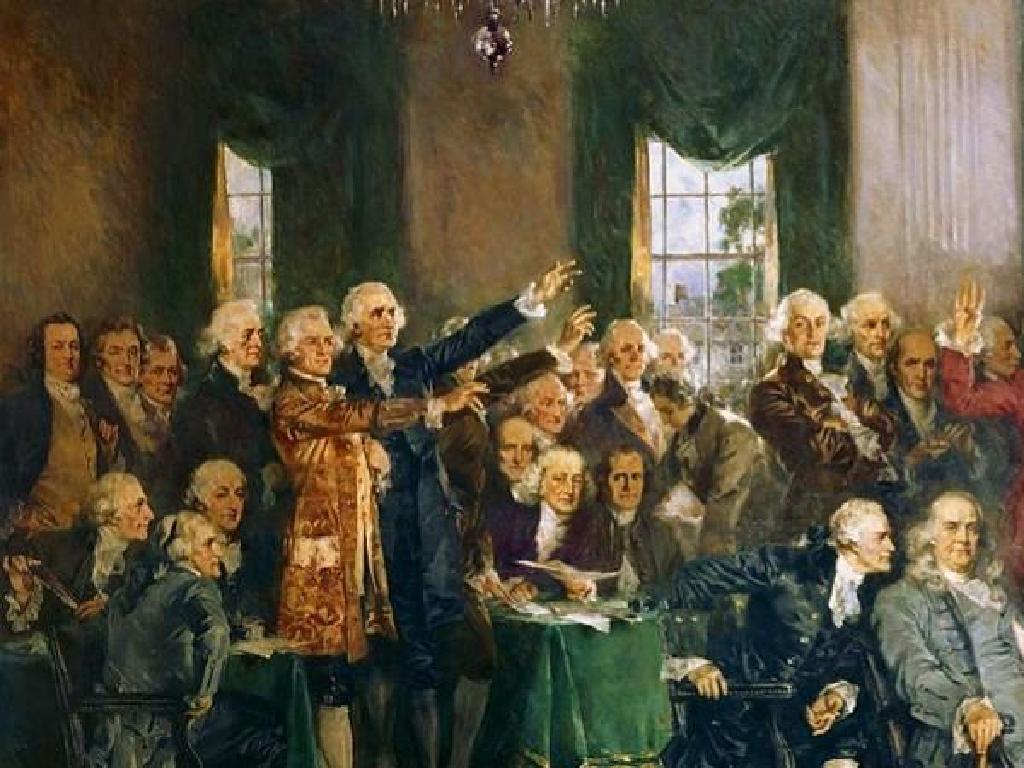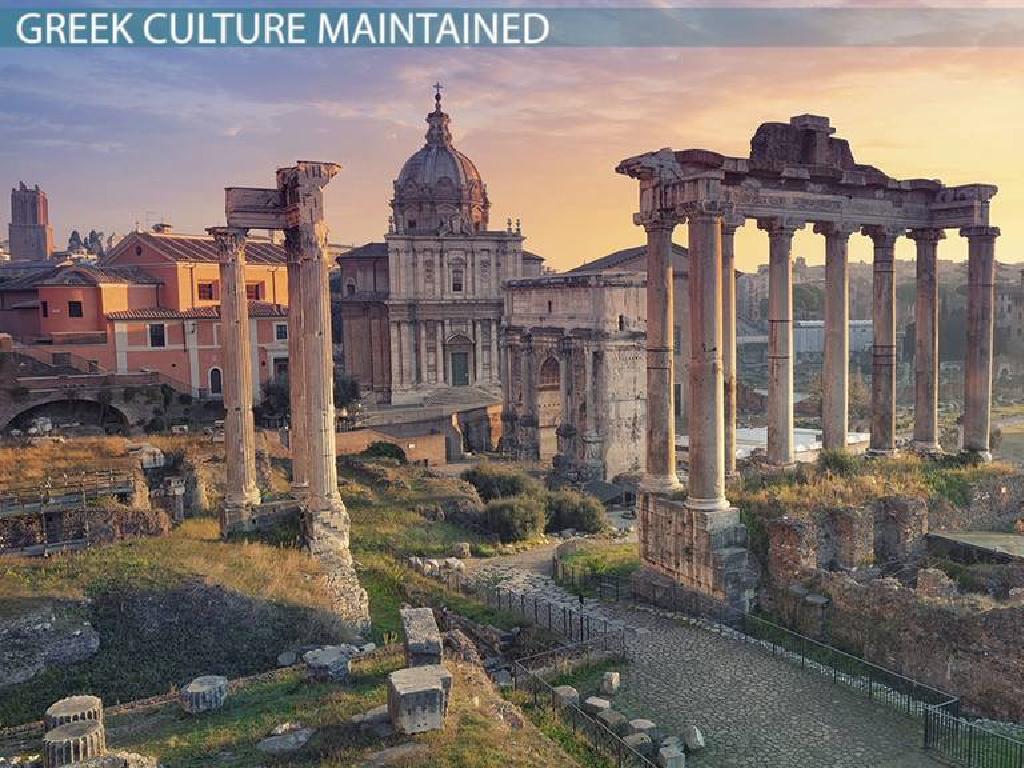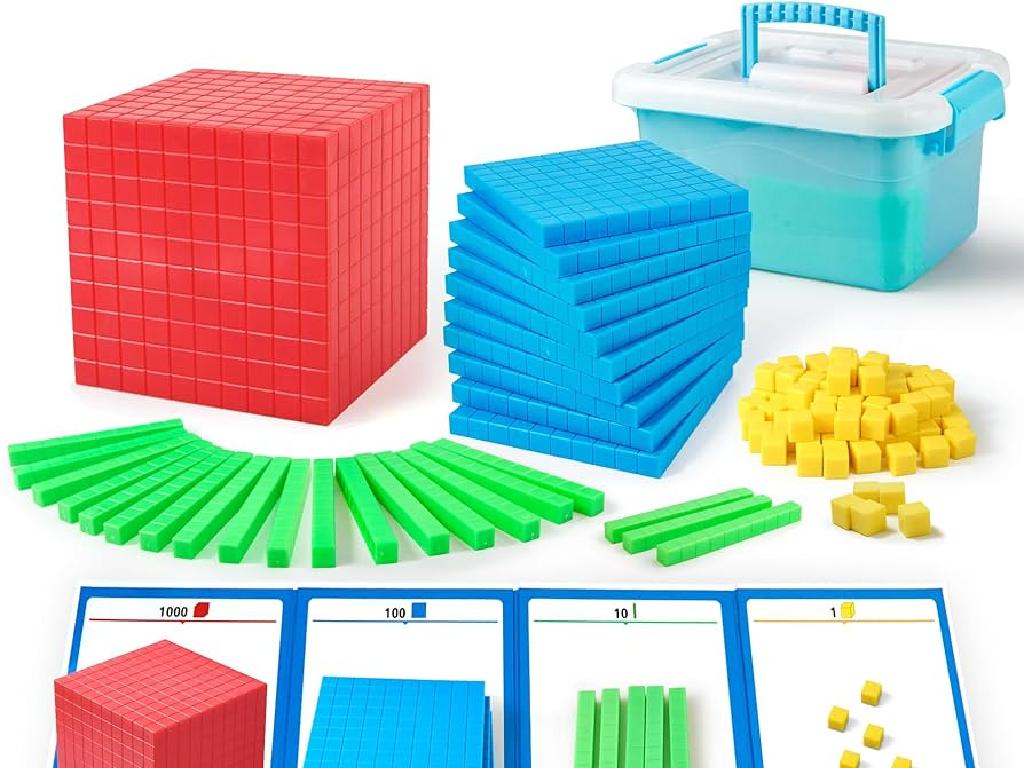Middle Colonies: Economy And Society
Subject: Social studies
Grade: Eighth grade
Topic: Colonial America
Please LOG IN to download the presentation. Access is available to registered users only.
View More Content
Exploring the Middle Colonies: Economy and Society
– Diverse economic activities
– Agriculture, trade, and manufacturing thrived
– Melting pot of cultures
– Settlers from various backgrounds contributed to a rich cultural tapestry
– Impact on modern America
– Democratic principles and cultural diversity have roots in these colonies
– Society structured by class
– Social hierarchy influenced by wealth and land ownership
|
This slide aims to give students a comprehensive overview of the Middle Colonies during the colonial period of America. Emphasize the diversity of economic activities, including farming, trading, and manufacturing, which led to the colonies’ prosperity. Highlight the mix of cultures, religions, and ethnicities that led to the Middle Colonies being known as the melting pot. Discuss how the democratic ideals and cultural diversity of the Middle Colonies have influenced the development of modern American society. Lastly, touch on the class structure of the society, where wealth and land ownership often determined one’s social status. Encourage students to think about how these historical aspects can be seen in today’s America.
The Middle Colonies: A Melting Pot of Culture and Prosperity
– Middle Colonies: NY, NJ, PA, DE
– Known for rich soil & moderate climate, ideal for farming
– Geographical & climate benefits
– A mix of various European settlers, Native Americans, and later, African slaves
– Cultural diversity
– Economic growth drivers
– Agriculture, trade, and skilled labor were economic mainstays
|
This slide provides an overview of the Middle Colonies during the colonial period in America. Emphasize the unique position of New York, New Jersey, Pennsylvania, and Delaware in terms of geography, which offered fertile land and a climate conducive to diverse agricultural activities. Highlight the cultural diversity, with settlers from various European countries, indigenous peoples, and African slaves contributing to a rich cultural tapestry. Discuss how this diversity influenced the society and economy of the colonies. The economy was multifaceted, with agriculture, trade, and skilled labor as key components. Encourage students to think about how these factors led to the Middle Colonies becoming a prosperous and culturally diverse region.
Economic Activities in the Middle Colonies
– Agriculture: ‘The Breadbasket’
– Known for abundant grain crops, hence ‘Breadbasket Colonies’
– Thriving trade in port cities
– New York and Philadelphia became trade hubs due to strategic locations
– Natural resources: timber & fur
– Timber used for building, fur for clothing and trade with Native Americans
– Economic impact on society
|
This slide explores the diverse economic activities that characterized the Middle Colonies, known for their fertile land and strategic coastal cities. The nickname ‘Breadbasket Colonies’ reflects the extensive grain production, which was a staple of their agricultural output. Emphasize the importance of port cities like New York and Philadelphia, which were vital for trade and commerce, becoming bustling centers of economic activity. Highlight how the abundance of natural resources, such as timber and fur, played a crucial role in the colonies’ economy, with timber being essential for construction and fur being a valuable commodity for trade, especially with Native American tribes. Discuss the broader societal implications of these economic activities, including how they shaped social structures and interactions in the colonies.
Society and Culture in the Middle Colonies
– Religious tolerance in the colonies
– Diverse beliefs coexisted, leading to a varied culture
– Social hierarchy: farmers to merchants
– Society ranged from small farmers to wealthy traders
– Education’s role in society
– Schools were community-centered, often church-run
– Community life in the Middle Colonies
– Town meetings and social gatherings were common
|
This slide explores the societal and cultural aspects of the Middle Colonies. Emphasize the unique aspect of religious tolerance, which allowed different denominations to coexist and contributed to a diverse cultural landscape. Discuss the social structure, noting the range from small-scale farmers to affluent merchants and the impact of such a hierarchy on the colonies’ economy and daily life. Highlight the importance of education, which was often tied to religious institutions, and how it played a central role in community cohesion. Lastly, touch on the vibrant community life, characterized by town meetings and social events, which were integral to the Middle Colonies’ society. Encourage students to compare these aspects with modern-day society and consider the long-term effects of such a foundation on American culture.
Daily Life in the Middle Colonies
– Roles of family members
– Men worked trades, women managed homes, children helped with chores and learned skills.
– Community events significance
– Gatherings were key for social, religious, and political life.
– City vs. Rural life
– City life was bustling with trade, rural areas focused on agriculture.
– Impact on society
|
This slide aims to give students a glimpse into the everyday life of people in the Middle Colonies. Discuss the distinct roles of men, women, and children in society, emphasizing the gender and age expectations of the time. Highlight the central role of community events like church services, town meetings, and market days in colonial social life. Contrast the busy, diverse atmosphere of cities, which were hubs of commerce and trade, with the agricultural, more self-sufficient lifestyle in rural areas. Explain how these differences influenced the development of society and economy in the Middle Colonies. Encourage students to compare and contrast these historical roles and lifestyles with those of today to foster a deeper understanding of the past.
Economic Impact on Society in the Middle Colonies
– Economic prosperity and social mobility
– More wealth meant more opportunities to move up the social ladder
– Trade’s influence on cultural diversity
– Trade with diverse regions brought varied cultures together
– Interplay of economy and society
– Markets and social structures were interwoven, affecting daily life
– Case studies of economic-social dynamics
– Examples: New York’s port activities, Pennsylvania’s farming communities
|
This slide explores the significant role that the economy played in shaping the society of the Middle Colonies. Economic prosperity in the colonies often led to greater social mobility, allowing individuals to improve their social status. The bustling trade not only brought wealth but also facilitated cultural exchanges, as merchants and goods from different parts of the world interacted. Students should understand how economic activities such as trade, farming, and craftsmanship influenced social interactions and cultural development. Discuss examples like New York, which grew into a diverse port city due to trade, and Pennsylvania, where farming success led to a strong, tight-knit community. Encourage students to think about how these historical examples compare to the relationship between economy and society today.
Class Activity: Life in the Middle Colonies
– Divide into groups by social class
– Role-play a colonial day
– Imagine the daily tasks and interactions
– Reflect on economic influences
– How did jobs and status affect daily life?
– Group discussion afterwards
|
This activity is designed to immerse students in the social and economic dynamics of the Middle Colonies. By role-playing different social classes and occupations, students will gain a deeper understanding of the societal structure and how the economy influenced daily life. Encourage each group to research their assigned roles to accurately depict a day in the life of a person from the Middle Colonies. After the role-play, lead a discussion on how the economy shaped society, asking students to reflect on their experiences during the activity. Possible roles include merchants, farmers, artisans, and servants. This will help students appreciate the complexities of colonial life and the interdependence of different social groups.
Reflecting on the Middle Colonies
– Recap: Middle Colonies’ economy
– Diverse economy with farming, trade, and manufacturing
– Societal structure of the time
– Society was a mix of cultures with varied religious beliefs
– Modern relevance of colonial history
– Understanding the foundations of today’s societal structures
– Journal entry as a colonist
– Imagine daily life and struggles faced by colonists
|
This slide aims to consolidate the students’ understanding of the Middle Colonies’ economy and society, emphasizing the diversity and richness of the period. It’s crucial for students to grasp how these historical elements contribute to our current societal makeup, including the development of democratic principles and cultural diversity. Encourage students to empathize with the colonists by writing a journal entry, which will help them to engage with history on a personal level. This activity will also enhance their creative writing skills and ability to analyze historical contexts. The journal entry should reflect the economic activities they’ve learned about, the social interactions between different groups, and the personal feelings a colonist might have experienced during that era.






